Types of heating: strengths and weaknesses of different ways
When arranging your home we can use a variety of types of space heating. However, to select a specific technology, it is necessary to study the features of all the most common, analyze their advantages and disadvantages, and also evaluate how this or that method will be applicable in the current conditions.
That is why in our article we decided to provide an overview of the most commonly used methods of heating houses and apartments.

Classification at the place of heat generation
The types of heating systems that are used in the daily practice of designing and building engineering systems are divided according to several criteria. In the sections of this material we consider the main classifications, and begin with the one that is determined by the place of heat generation.
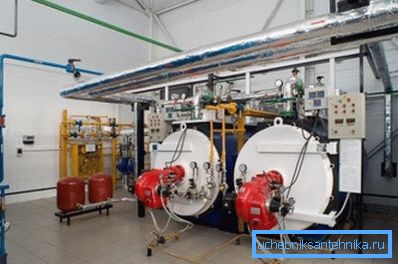
On this basis, the types of heating can be divided into two large groups:
- Central heating - the coolant is heated for several objects at the same time, after which it enters the room through pipes. To heat the coolant use special facilities - boiler rooms or CHP - equipped with high-performance boilers for hot water or steam.
- Autonomous - the heating medium is heated in the heated building itself. For this purpose, either individual boilers operating on different fuels (gas, wood, coal, electricity) are installed in the room, or small boiler complexes are installed.

Note! Some experts identify not only these types - heating with the help of electric convectors or infrared panels, for example, they belong to a separate category of local heating. However, in most cases, these techniques are still considered together.
To compare the advantages and disadvantages of centralized and autonomous heating, we have compiled a table:
| Type of heating | Benefits | disadvantages |
| Centralized |
|
|
| Autonomous |
|
|
As you can see, you can find arguments in favor of both technology, but different types of autonomous heating are still more attractive in terms of ease of use, and in terms of reducing costs. So in the next section, we will focus on them.
Coolant classification
Oven
In addition to the principle of transportation of the coolant, types of heating systems are divided into groups and other signs. So, it is very important to understand exactly how heat is transferred from the heater to the air in the room.
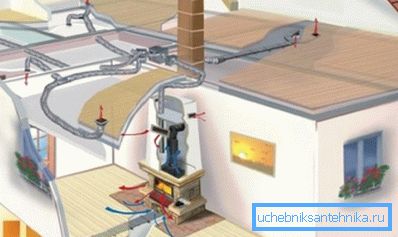
Historically, air was used first as a heat carrier.
This technique is actively used to this day in various furnace heating systems:
- The central device in this scheme is the oven. It may be metal (cast iron or steel), but where it is more often laid out of brick, connecting with the supporting structures of the building.
- Inside the furnace, the combustion of fuel takes place. For this purpose, use coal, firewood or pellets from pressed chips.
- When burning, heat is generated, which is transmitted to the air. Hot air through the heat pipes is carried to the premises, ensuring that the optimum temperature is maintained.
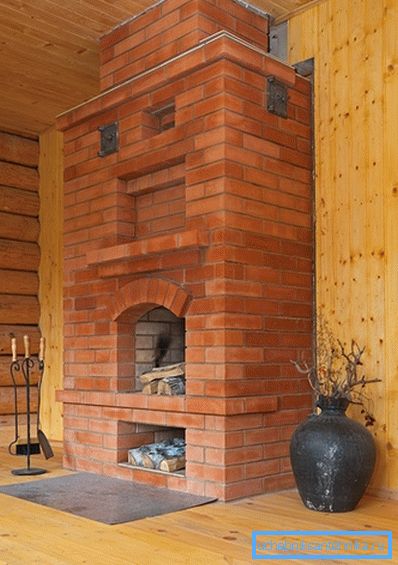
However, in practice, where other types are used more often: furnace-type heating systems are rightly considered rather cumbersome, and in terms of the efficiency of heat transfer, they seriously lose to water or steam circuits.
Water
The technique of space heating, in which hot water acts as a coolant, is the most common:
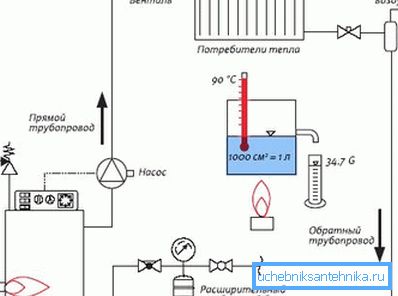
- Heat carrier is heated in water boilers. They may have different designs depending on what kind of fuel they consume. To date, the most popular are electric, gas and solid fuel (ie, working on coal, wood, or special briquettes) devices.
Note! Also in demand are combined heating boilers in which a firebox for wood can be combined with a gas burner. These products are more expensive than usual, but they allow you to choose fuel, depending on the situation.
- Hot water enters the radiators. It uses a variety of types of pipes for heating, ranging from traditional steel and cast iron models, and ending with modern multi-layered products from heat-resistant polymers with metal inserts.
- The choice of radiators on the market is also very extensive.. In the houses and apartments of the old building there are still batteries made of cast iron or steel convectors, while today steel panel heaters, aluminum and bimetallic radiators, and copper products with maximum heat transfer are more relevant.
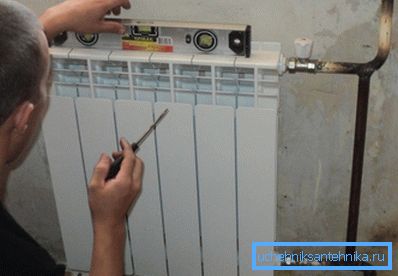
Steam
Sometimes, instead of hot water, steam is used in the heating system.
In this case, the hardware configuration will be slightly different:
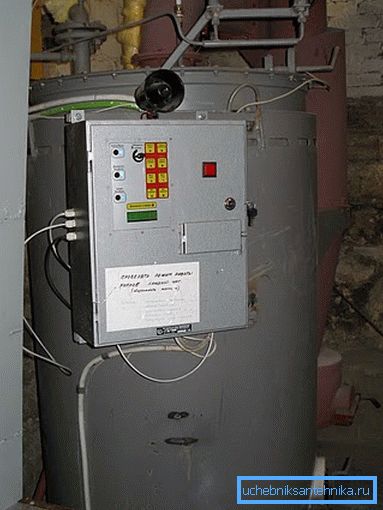
- For heating, special steam boilers are used that can withstand temperatures up to 1300C and high blood pressure.
- Pipes are also used exclusively heat-resistant, since the usual varieties begin to rule already at 95 - 100 degrees. The instruction recommends using steel or copper products, as they are sufficiently resistant to deformations.
- Particular attention in the equipment of steam heating is given to the tightness of connections and protection of radiators. This is due to the fact that in contact with a heated metal or a jet of hot steam, you can get a strong burn.
And yet, despite the fact that the steam circuits heat the room faster than standard water, they are considered less popular. This is explained mainly by the complexity of installation of systems and the rapid wear of parts during operation in extreme conditions.
Electric
Finally, it is worthwhile to talk about electric heating, which is usually used as a more environmentally friendly alternative to traditional methods of heating:
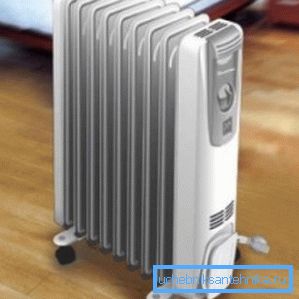
- A convector, a radiator or an infrared panel, working directly from the electrical network of the building, is used as a heating device.
- Heat transfer occurs directly in a heated room, which eliminates the loss of energy during transportation.
- When using infrared systems, it is not the air that is heated, but the objects themselves, which are located in the room, which allows to optimize energy costs.

However, electrical heating has many drawbacks, the main ones being the following:
- First of all, electricity is a rather expensive type of fuel, so the cost of maintaining a microclimate will be quite substantial.
- Secondly, the load on the building's electrical grid will be significant, so the wiring with a high probability will have to be changed.
However, if such a prospect does not frighten you, then you can easily equip it with electric heating in your home.
Conclusion
Of course, the article provides only an overview of what types of heating are, and what are their advantages with disadvantages. For a more fundamental study of the topic, we recommend viewing the video attached to the material, as well as familiarize yourself with other sections of our site.